Catalyst: Form + Content Gallery
Patricia Briggs spoke with Jim Dryden, Camille Gage, and Howard Oransky of Form + Content Gallery about their new co-op space in the Minneapolis warehouse district. The opening is Saturday evening, March 3--with Mayor Rybak in attendance! Don't miss it.
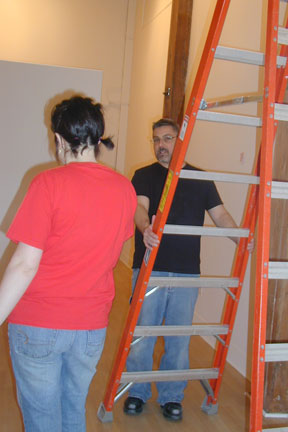
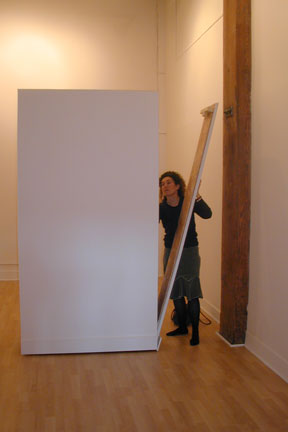
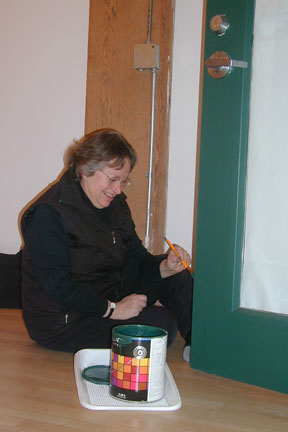
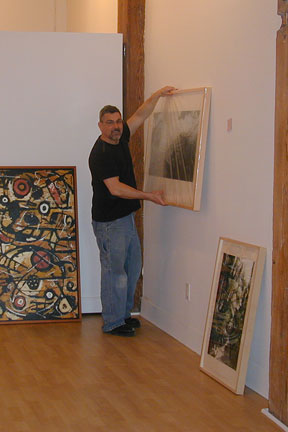
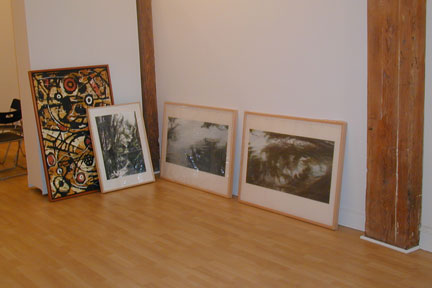
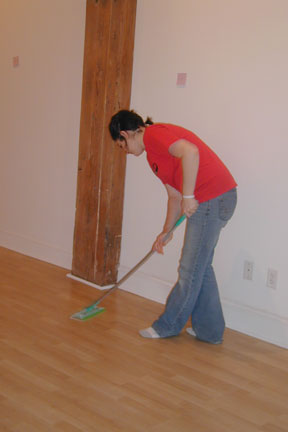
Member-owned, Form and Content Gallery does not hold commercial sales as its primary motivation. Rather, its goal is to promote artistic practice as a catalyst for critical thinking and dialogue with the broader community.
Doryun Chong, assistant curator of visual art at the Walker Art Center, selected the work for the inaugural exhibition, which opens March 1st. Trace Elements features work by artist members and special guests Clarence Morgan and Arlene Burke-Morgan. A grand opening reception will be held on Saturday, March 3rd from 6:00 to 9:00 p.m.
Form + Content Gallery’s members include Christine Baeumler, Jim Dryden, Jil Evans, Camille J. Gage, Leah Golberstein, Jay Isenberg, Joyce Lyon, Lynda Monick-Isenberg, Howard Oransky, Robyn Stoller, and Jeff Wetzig.
Patricia Briggs How does Form and Content Gallery differ from other galleries in the Twin Cities?
Howard Oransky: Well, we are not only going to show the work of gallery members, but we have built into the structure of the gallery the involvement of outside artists and curators. We have developed an exhibition calendar that gives each member a slot to show their own work—or someone else’s work if they please. […] But we have also included several slots a year for shows where we all decide on a topic and we curate a show drawn from the outside community. […] By agreeing to stagger the exhibition calendar in this way we are all saying “yes, our work is important” but equally important is what is going on out there in the world. I’m really proud of that.
PB: Could you tell me more about Trace Elements? I was surprised to hear that you invited Doryun Chong to select the work for the show, rather than allow the artist members to self-curate the inaugural exhibition.
HO: For the first show we invited a curator to come in and select the works. Again, I think this is important because it does not follow the typical artist cooperative gallery model. We really don’t want this to run like a typical artist’s cooperative. We very much want it to be engaged in the community and so we brought Doryun Chong in and turned over a bunch of work to him and said “Here, do something that makes sense to you; make your choices and find the thread that fits work together.”
PB: I think that really speaks to your cooperative’s openness, its genuine desire for connection and engagement with institutions and individuals from the outside. Also, to my mind, working with a Walker curator speaks to the gallery’s commitment to quality and criticality.
HO: Yes, I think what often happens when a group of artists start a gallery is that people think: “There is going to be no quality control. They own the gallery and they are putting their work in it. It’s a vanity thing.”
PB: Yes, there is the assumption I guess that a cooperative is somehow primarily self-serving. When I first heard about Form and Content Gallery it struck me as unusual that you were interested in showing the work of other artists – by nonmembers – in a regular way. This struck me as unusual. It may not be.
Camille Gage: Yes, it is unusual. We financially support the gallery much like we pay for our studios and supplies. This is part of our art making—especially those of us who do a lot of community-based work. I consider this a part of my community-based work. We support the gallery, we run it, we manage it, we give the gift of our time to the cooperative. So, to bring the work of others in, and to want to do things in the community is different and reflects our values and our commitment to the role of art in community. I think many other coops are more focused on sales and that is legitimate. We simply wanted to do something different.
PB: Are sales a motivation for you?
CG: Yes the work will be for sale; but there will be a lot of things here that cannot, or likely will not, be purchased because they are so temporal or perhaps too political. There will be things here that people won’t be able to put under their arm and walk out with… [laughter]
Jim Dryden: We are set up as a commercial gallery legally, but I don’t think that is the model that we are shooting for as far as how the work is presented. I know, for example, that Lynda [Monick-Isenberg] is planning to have work that she simply prints on her printer, and then people will be able to take them for free.
HO: It’s actually very important to us that we are a commercial gallery, but not for the most obvious reasons. Not because we are in it for money, because we’re not. If we were a non-profit we would have to have a board of directors who would all be from outside the gallery and we don’t want to answer to anybody for anything. So, because we are running the gallery from our own pockets…
PB: …you are your own board of directors.
HO: Right. We are all governors of the company and this gives us total freedom to do anything we want.
PB: So you won’t be able to get grant funding, which is so important to so many of the galleries in the Twin Cities.
HO: No.
PB: That means, though, that you don’t have to be constrained by the rules and regulations that can come with grants. I’ve been reading recently—in the book Who Cares— about how many people in the art world feel that the conservative agendas of granting foundations have played a significant role in depoliticizing art in the past few decades. So, you might be on the right track if you can sustain your financial independence without grants.
PB: What else distinguishes Form and Content Gallery from other galleries or non-profit exhibition spaces in the Twin Cities? What is new here? What are you bringing to the community with this gallery?
JD: One thing that I think the gallery provides to the group and that it will provide for the community is that although we are organized as a commercial gallery, we are not limited by the constraints that commercial galleries often face by the need to sell work. For example, I’ve sold through several different galleries and they tell me we need paintings that are between this size and this size, that deal with this subject or that subject. We are creating a situation here where we have a commercial gallery structure but, for instance, Camille does social justice and war-related artwork that a lot of commercial galleries aren’t really able to support. I do work with gay/lesbian and GLBT issues and sometimes galleries say, “We love your work but we don’t think we have the customer base to show it.”
CG: Yes, I show at a gallery in Duluth and they have sold my work to both individuals and corporate clients. But they will not show the work I am currently doing on the war in Iraq. And I understand why – they have to sell work and make money to keep the doors open. However, Form + Content Gallery is different. It allows me a venue for my more topical or controversial work. Also the cooperative will allow me to collaborate on a show if I want, with whomever I want. I am interested in collaborating with Juliet Patterson, a Minneapolis poet. I am also interested in collaborating with Barry Scanlon, a neighbor of mine who is very active with Veterans for Peace and also happens to publish his own zine. So when my exhibition month comes around I am very free to partner or collaborate or present the work of other artists. I find this really exciting.
[…] You asked how we want to function in the community. I think one of the great roles that art plays and that all the presenting institutions play is that of a convener of people and a catalyst for dialogue. And that is where we see ourselves fitting in. […] We are a nimble organization and can choose to program in response to topical events. I firmly believe that art has a role to play in civic engagement, and that though we may be small in the grand scheme of national and international affairs, what we do still matters. All the little actions of artists, musicians, and in the theaters and the galleries, start to add up and support change.
HO: I think there is also something exciting about this for us as a group of friends—actually 4 groups of friends who became one group in the making of this gallery. Through the connections that we all have we are able to connect with others in the community and bring them in as collaborators. We have connections with philosophers and writers and architects already. We have a very expansive idea of what we want to do. There are no borders, no definitions, no rules and that is exciting.